2.2
km / 1.4
miles
-
(6
minutes)


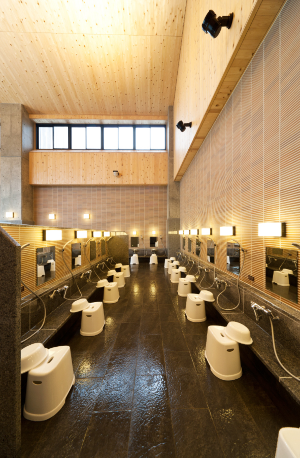

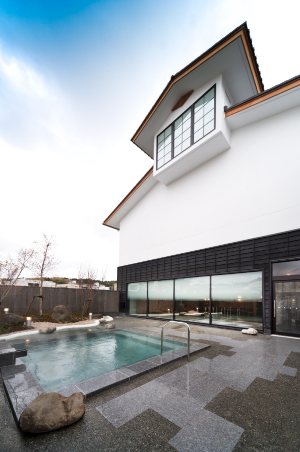
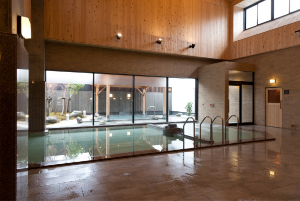
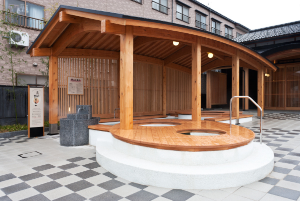
Min/Max Time :
20 / 60
Minutes
MapCode :
590 305 249*47
Phone :
076-762-2221
Website :
Hours :
Open daily 07:00 – 21:00
Address :
Wa-6-2 Wakuramachi, Nanao-shi, Ishikawa 926-0175
0.2
km / 0.1
miles
-
(1
minutes)

Min/Max Time :
10 / 30
Minutes
MapCode :
590 305 460*77
Phone :
076-762-4000
Website :
Description :
The Le Musee de H is famed Pastry Chef Hironobu Tsujiguchi's pastry shop in Nanao, his hometown. The shop includes a small museum with some of his art work and a cafe to experience some of his delicious confections. His main store is in Kanazawa. The delicious creations here are well worth a stop whether just to view the art or for dessert.
Hours :
Open daily 09:00-19:00.
Address :
65-1 Wakura-machi, Nanao, Ishikawa 926-0175
8.0
km / 4.9
miles
-
(13
minutes)
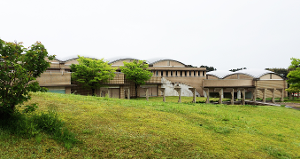
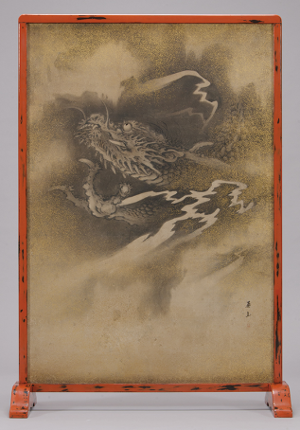
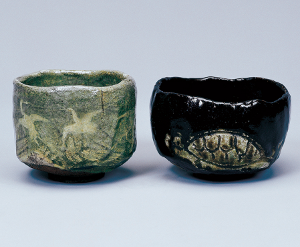
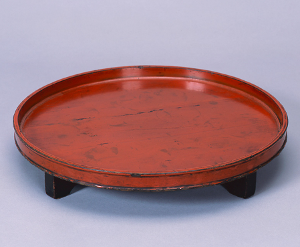
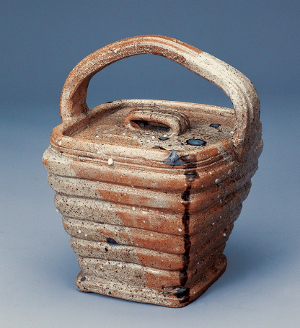
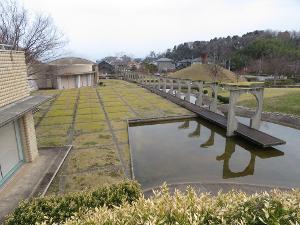
Min/Max Time :
20 / 60
Minutes
MapCode :
135 774 024*28
Phone :
076-753-1500
Website :
Description :
The Ishikawa Nanao Art Museum opened in 1995 in Nanao, Ishikawa Prefecture. It is the main art gallery on the Noto Peninsula. It's collection includes works by Nanao native Hasegawa Tōhaku (1539-1610), a famous Japanese painter and the founder of the Hasegawa School during the Azuchi-Momoyama Period (1573-1603).
There are two collections: the "Ikeda Collection", which includes art objects, collected by local businessman Ikeda Fumio, and the "Noto Art Collection". The works by foreign painters are also exhibited here.
Courtesy of JapanHoppers.com
There are two collections: the "Ikeda Collection", which includes art objects, collected by local businessman Ikeda Fumio, and the "Noto Art Collection". The works by foreign painters are also exhibited here.
Courtesy of JapanHoppers.com
Hours :
Open daily 09:00 - 17:00
Address :
1-1 Komaruyamadai, Nanao, Ishikawa 926-0855
1.2
km / 0.7
miles
-
(5
minutes)
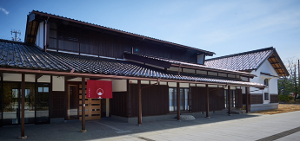

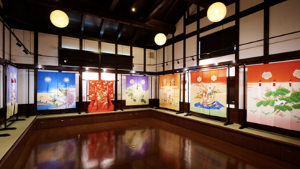
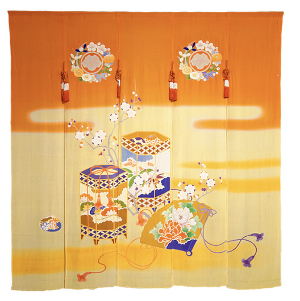
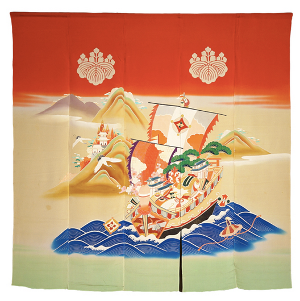

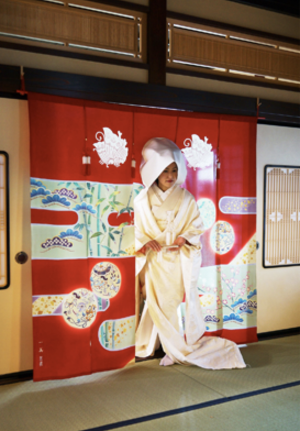
Min/Max Time :
10 / 45
Minutes
MapCode :
135 775 233*22
Phone :
076-753-8743
Website :
Description :
The Hanayome Noren Museum is also called the "Bridal Curtain Museum", and is located a block from Ipponsugi St. The museum's focus is on "noren" (curtains) used in wedding ceremonies, particularly in the old Kaga Domain of Ishikawa Prefecture during the Edo (1603-1868) and Meiji (1868-1912) periods. The museum displays the evolution of these curtains from the nineteenth century to the present day.
Hanayome noren (“bride curtains”) are hung at the entrance of the Buddhist alter room in the groom’s house. In the local wedding custom, the bride’s entry into her new home begins with stepping through these handmade curtains. Unfortunately, once the wedding ceremony is finished, there is usually no opportunity to use the curtain again. For this reason, female managers of shops and restaurants on Ipponsugi Street started to hold the “Hanayome Noren Exhibition” during Japan's Golden Week (early-May holiday season in Japan) since 2004. The curtains are displayed in shops and houses on the shopping street during the week and attract large numbers of people.
The “Hanayome Noren Museum” was built and opened in 2016 to enable visitors to look at the curtains all year round. It's collection includes curtains from the Meiji (1868-1912) to the Heisei (1989-2019) periods that are displayed in the permanent exhibition rooms. In addition visitors can dress up in wedding costumes and go through the bridal curtain with prior arrangements.
Note A) Parking for the museum is at MapCode: 135 775 201*71, next to the Komaruyama Park. Inside the park are the ruins of the Komaruyama Castle that was built in 1589 after the Nanao Castle was abandoned. B) The Kotoku-ji Temple, MapCode: 135 775 291*55, an impressive Buddhist temple, is located next door to the museum and is worth a visit.
Hanayome noren (“bride curtains”) are hung at the entrance of the Buddhist alter room in the groom’s house. In the local wedding custom, the bride’s entry into her new home begins with stepping through these handmade curtains. Unfortunately, once the wedding ceremony is finished, there is usually no opportunity to use the curtain again. For this reason, female managers of shops and restaurants on Ipponsugi Street started to hold the “Hanayome Noren Exhibition” during Japan's Golden Week (early-May holiday season in Japan) since 2004. The curtains are displayed in shops and houses on the shopping street during the week and attract large numbers of people.
The “Hanayome Noren Museum” was built and opened in 2016 to enable visitors to look at the curtains all year round. It's collection includes curtains from the Meiji (1868-1912) to the Heisei (1989-2019) periods that are displayed in the permanent exhibition rooms. In addition visitors can dress up in wedding costumes and go through the bridal curtain with prior arrangements.
Note A) Parking for the museum is at MapCode: 135 775 201*71, next to the Komaruyama Park. Inside the park are the ruins of the Komaruyama Castle that was built in 1589 after the Nanao Castle was abandoned. B) The Kotoku-ji Temple, MapCode: 135 775 291*55, an impressive Buddhist temple, is located next door to the museum and is worth a visit.
Hours :
Open Daily 09:00 – 17:00
Address :
49 Tsutobu, Mademachi, Nanao, Ishikawa 926-0818
0.1
km / 0.1
miles
-
(1
minutes)
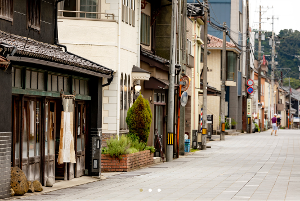

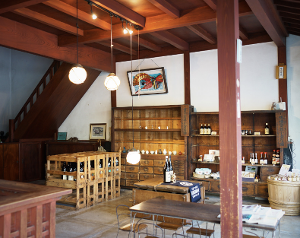

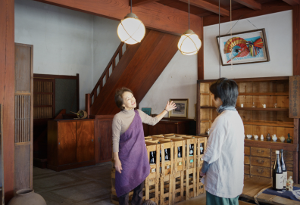
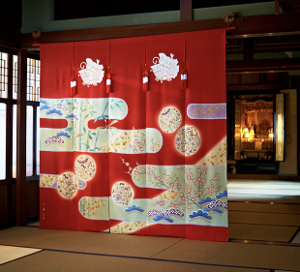
Min/Max Time :
20 / 90
Minutes
MapCode :
135 775 267*28
Description :
The Ipponsugi Street stretches for about 450 m/1476 ft between the Misogi Community Center and the Sentai Bridge over the Misogi River. It has flourished as a shopping street beginning in the Edo Period (1603-1868) when Nanao was an important port of call for merchant ships, called "kitamaebune", that traded along the Sea of Japan coast from Osaka to Hokkaido. Many of the street’s shops are still housed in old buildings, some from as early as the late 1800s.
Ipponsugi is well worth visiting for its many traditional shops making and selling seaweed (Shirai Shop, MapCode: 135 775 269*63), traditional candles (Takazawa Candle Shop, MapCode: 135 776 181*52), soy sauce (Toraii Soy Sauce Shop, MapCode: 135 776 181*52), and other traditional items. Next door to the Takazawa Candle Shop is the Rinya Kimono Shop selling hand-painted noren and kimono. There are various small parking lots along the street.
Ipponsugi is well worth visiting for its many traditional shops making and selling seaweed (Shirai Shop, MapCode: 135 775 269*63), traditional candles (Takazawa Candle Shop, MapCode: 135 776 181*52), soy sauce (Toraii Soy Sauce Shop, MapCode: 135 776 181*52), and other traditional items. Next door to the Takazawa Candle Shop is the Rinya Kimono Shop selling hand-painted noren and kimono. There are various small parking lots along the street.
Hours :
Open daily
Address :
Nanao City
Ishikawa
3.0
km / 1.8
miles
-
(9
minutes)
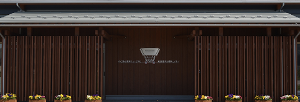
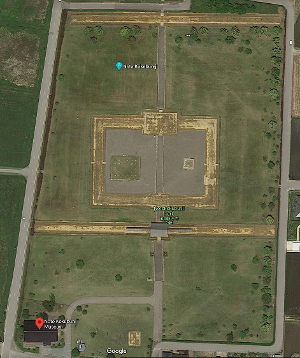
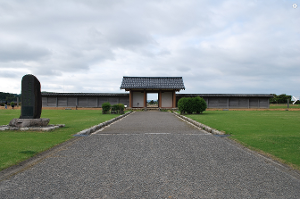
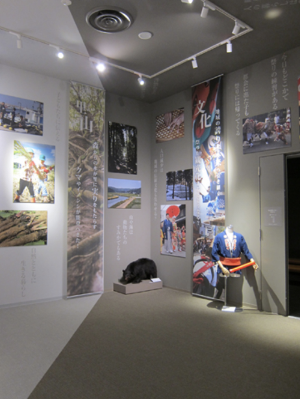

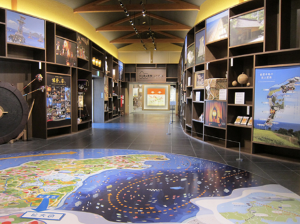
Min/Max Time :
10 / 60
Minutes
MapCode :
135 685 450*63
Phone :
076-757-5100
Website :
Description :
The Noto Satoyama Satoumi Museum is a new museum in Nanao opened in 2019. It highlights the Satoyama Satoumi culture of the Noto region.
Satoyama (里山) is a Japanese term applied to the border zone or area between mountain foothills and arable flat land. Literally, "sato" (里) means village, and "yama" (山) means hill or mountain. Satoyama have been developed through centuries of small scale agricultural and forestry use. The concept of satoyama has several definitions. The first definition is the management of forests through local agricultural communities, using coppicing. During the Edo era, young and fallen leaves were gathered from community forests to use as fertilizer in wet rice paddy fields. Villagers also used wood for construction, cooking and heating. More recently, satoyama has been defined not only as mixed community forests, but also as entire landscapes that are used for agriculture. According to this definition, satoyama contains a mosaic of mixed forests, rice paddy fields, dry rice fields, grasslands, streams, ponds, and reservoirs for irrigation. Farmers use the grasslands to feed horses and cattle. Streams, ponds, and reservoirs play an important role in adjusting water levels of paddy fields and farming fish as a food source.
Satoumi (里海) is defined as marine and coastal landscapes that have been formed and maintained by prolonged interaction between humans and ecosystems.
Note that next door to the museum are the Noto Kokubun-ji Temple Ruins and the Noto Kokubun-ji Museum (MapCode: 135 685 454*85). The Noto Kokubun-ji Temple (能登国分寺) was a Buddhist temple located in what is now the city of Nanao, in Ishikawa Prefecture. It was one of the provincial temples established by Emperor Shōmu during the Nara period (710 – 794) for the purpose of promoting Buddhism as the national religion of Japan and standardizing control of the Yamato rule to the provinces. The temple no longer exists, but the temple grounds and excavated ruins were designated as a National Historic Site by the Japanese government in 1974.
Courtesy of Wikipedia
Satoyama (里山) is a Japanese term applied to the border zone or area between mountain foothills and arable flat land. Literally, "sato" (里) means village, and "yama" (山) means hill or mountain. Satoyama have been developed through centuries of small scale agricultural and forestry use. The concept of satoyama has several definitions. The first definition is the management of forests through local agricultural communities, using coppicing. During the Edo era, young and fallen leaves were gathered from community forests to use as fertilizer in wet rice paddy fields. Villagers also used wood for construction, cooking and heating. More recently, satoyama has been defined not only as mixed community forests, but also as entire landscapes that are used for agriculture. According to this definition, satoyama contains a mosaic of mixed forests, rice paddy fields, dry rice fields, grasslands, streams, ponds, and reservoirs for irrigation. Farmers use the grasslands to feed horses and cattle. Streams, ponds, and reservoirs play an important role in adjusting water levels of paddy fields and farming fish as a food source.
Satoumi (里海) is defined as marine and coastal landscapes that have been formed and maintained by prolonged interaction between humans and ecosystems.
Note that next door to the museum are the Noto Kokubun-ji Temple Ruins and the Noto Kokubun-ji Museum (MapCode: 135 685 454*85). The Noto Kokubun-ji Temple (能登国分寺) was a Buddhist temple located in what is now the city of Nanao, in Ishikawa Prefecture. It was one of the provincial temples established by Emperor Shōmu during the Nara period (710 – 794) for the purpose of promoting Buddhism as the national religion of Japan and standardizing control of the Yamato rule to the provinces. The temple no longer exists, but the temple grounds and excavated ruins were designated as a National Historic Site by the Japanese government in 1974.
Courtesy of Wikipedia
Hours :
Open daily 09:00 – 17:00. Closed Tuesdays.
Address :
Kokubu-machi, Nanao, Ishikawa 926-0821
3.0
km / 1.9
miles
-
(7
minutes)
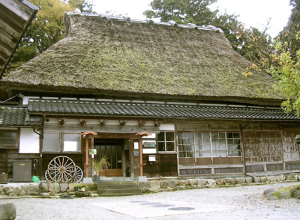
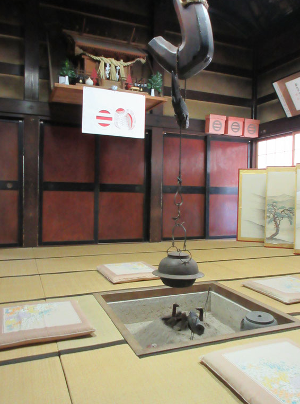
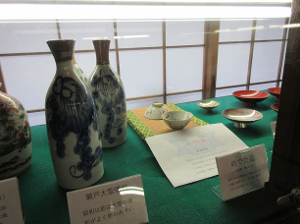
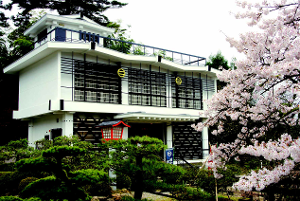
Min/Max Time :
15 / 30
Minutes
MapCode :
135 687 495*30
Phone :
076-753-4215
Website :
Description :
The Kaikokan, formerly the Iida Family Home, is an old traditional thatched roof building dating from the late Edo Period (1603-1868). It is listed as a nationally registered tangible cultural property. The high ceiling is lined with bamboo to allow smoke and moisture to leave. Various kinds of wood were used to make the building, including zelkova, cedar, Asunaro, pine, and chestnut.
Stones in the large garden come from a Samurai residence in the Nanao Castle. The garden features more than 40 kinds of moss and is said to be a typical moss botanical garden in the lowlands of Ishikawa Prefecture.
The family still owns the old tombs including at the main castle of the Nanao Castle Ruins, and has endeavored to preserve and manage them.
Note: that in this same compound is the Nanao Castle History Museum and an office with tourist information about the Nanao Castle Ruins themselves.
Courtesy of nanaojyou.com
Stones in the large garden come from a Samurai residence in the Nanao Castle. The garden features more than 40 kinds of moss and is said to be a typical moss botanical garden in the lowlands of Ishikawa Prefecture.
The family still owns the old tombs including at the main castle of the Nanao Castle Ruins, and has endeavored to preserve and manage them.
Note: that in this same compound is the Nanao Castle History Museum and an office with tourist information about the Nanao Castle Ruins themselves.
Courtesy of nanaojyou.com
Hours :
Open daily 09:00 - 17:00. Closed Mondays.
Address :
8-6 Tabe, Furuyashiki-cho, Nanao-shi, Ishikawa 926-0024
5.5
km / 3.4
miles
-
(13
minutes)
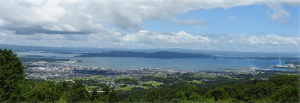
Min/Max Time :
15 / 45
Minutes
MapCode :
135 629 483*30
Description :
The Shiroyama Observation Deck is a 580 m/ ft uphill walk from this parking lot. There is another parking lot lower down (MapCode: 135 629 483*30) which has toilets.
The name "Nanao" (七尾) literally means "Seven Tails" and is said to be named for the seven mountain ridges (or "tails") surrounding Shiroyama that are visible when viewed from the site of the city's historical castle ruins. These ridges are called Kikuo (菊尾, "Chrysanthemum Tail"), Kameo (亀尾, "Turtle Tail"), Matsuo (松尾, "Pine Tail"), Torano'o (虎尾, "Tiger Tail"), Takeo (竹尾, "Bamboo Tail"), Umeo (梅尾, "Plum Tail"), and Tatsuo (龍尾, "Dragon Tail"). When the Nanao Castle was first built each ridge had its own fort, all connected and surrounding the main fort at the top of the hill.
Courtesy of Wikipedia
The name "Nanao" (七尾) literally means "Seven Tails" and is said to be named for the seven mountain ridges (or "tails") surrounding Shiroyama that are visible when viewed from the site of the city's historical castle ruins. These ridges are called Kikuo (菊尾, "Chrysanthemum Tail"), Kameo (亀尾, "Turtle Tail"), Matsuo (松尾, "Pine Tail"), Torano'o (虎尾, "Tiger Tail"), Takeo (竹尾, "Bamboo Tail"), Umeo (梅尾, "Plum Tail"), and Tatsuo (龍尾, "Dragon Tail"). When the Nanao Castle was first built each ridge had its own fort, all connected and surrounding the main fort at the top of the hill.
Courtesy of Wikipedia
Hours :
Open daily 24/7
Address :
926-0025, Furushiro-cho Nanao-shi Ishikawa 926-0025
1.8
km / 1.1
miles
-
(6
minutes)

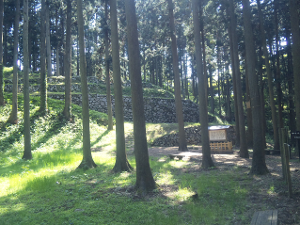
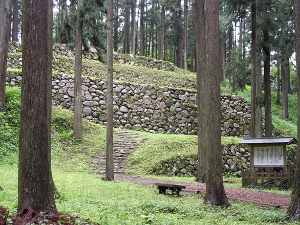
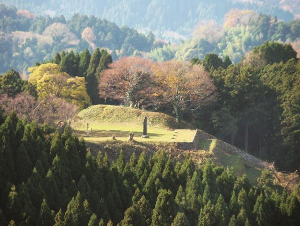

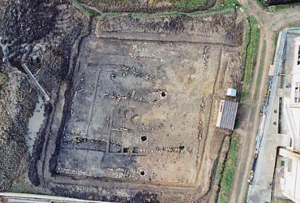

Min/Max Time :
15 / 60
Minutes
MapCode :
135 628 647*25
Phone :
076-753-8424
Description :
The Nanao Castle was regarded as one of the five largest medieval mountain castles in Japan along with Kasugayama Castle (Niigata Prefecture), Odani Castle and Kannonji Castle (Shiga Prefecture), and Gassan Toda Castle (Shimane Prefecture). Its ruins are located along the upper slopes of Shiroyama mountain, a 300 m/984 ft height on the southern edge of the modern city of Nanao.
Its original construction began in 1408. Eventually the castle consisted of several enclosures, each with stone ramparts and dry moats. The central enclosure was at the top of the hill, and could only be reached by passing through the enclosures assigned to important vassals, which completely surrounded the central enclosure on several concentric levels on the lower slopes. The total size of the fortifications exceeded 1 sq km/247 acres.
In 1576 the castle was attacked and after over a year of assault, the death by illness of the Daimyo, and treachery by a retainer, the castle finally fell in 1577. In 1586 it was abandoned in favor of a new castle, Komaruyama, in what is now downtown Nanao.
The name "Nanao" (七尾) literally means "Seven Tails" and is said to be named for the seven mountain ridges (or "tails") surrounding Nanao that are visible when viewed from Joyama (七尾城山), site of the city's historical castle ruins. These ridges are called Kikuo (菊尾, "Chrysanthemum Tail"), Kameo (亀尾, "Turtle Tail"), Matsuo (松尾, "Pine Tail"), Torano'o (虎尾, "Tiger Tail"), Takeo (竹尾, "Bamboo Tail"), Umeo (梅尾, "Plum Tail"), and Tatsuo (龍尾, "Dragon Tail").
Courtesy of Wikipedia
Its original construction began in 1408. Eventually the castle consisted of several enclosures, each with stone ramparts and dry moats. The central enclosure was at the top of the hill, and could only be reached by passing through the enclosures assigned to important vassals, which completely surrounded the central enclosure on several concentric levels on the lower slopes. The total size of the fortifications exceeded 1 sq km/247 acres.
In 1576 the castle was attacked and after over a year of assault, the death by illness of the Daimyo, and treachery by a retainer, the castle finally fell in 1577. In 1586 it was abandoned in favor of a new castle, Komaruyama, in what is now downtown Nanao.
The name "Nanao" (七尾) literally means "Seven Tails" and is said to be named for the seven mountain ridges (or "tails") surrounding Nanao that are visible when viewed from Joyama (七尾城山), site of the city's historical castle ruins. These ridges are called Kikuo (菊尾, "Chrysanthemum Tail"), Kameo (亀尾, "Turtle Tail"), Matsuo (松尾, "Pine Tail"), Torano'o (虎尾, "Tiger Tail"), Takeo (竹尾, "Bamboo Tail"), Umeo (梅尾, "Plum Tail"), and Tatsuo (龍尾, "Dragon Tail").
Courtesy of Wikipedia
Hours :
Open daily 24/7
Address :
15, 14-124 Furushiro-machi, Nanao, Ishikawa 926-0025
6.6
km / 4.1
miles
-
(15
minutes)
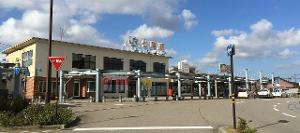
MapCode :
135 746 631*82
Phone :
076-752-0236
Description :
Nanao Station (Nanao-eki) is a railway station in Nanao-shi (Nanao City), Ishikawa-ken (Ishikawa Prefecture) operated by West Japan Railway Company (JR West) and the private railway operator Noto Railway. The station averages about 1,600 boarding passengers per day.
The station has a Midori no Madoguchi (みどりの窓口, literally "green window") with a MARS (マルス Marusu, which stands for Multi Access seat Reservation System) capable of selling reserved seats throughout the entire JR system.
The station also serves as a bus station hub.
The station has a Midori no Madoguchi (みどりの窓口, literally "green window") with a MARS (マルス Marusu, which stands for Multi Access seat Reservation System) capable of selling reserved seats throughout the entire JR system.
The station also serves as a bus station hub.
Hours :
Open daily 04:50 - 22:45
Address :
28-2, Onioncho, Nanaoi, Ishikawa 926-0811